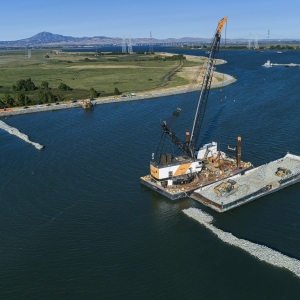The Stream, September 10, 2021: Lake Shasta Levels Drop Dangerously Low
YOUR GLOBAL RUNDOWN
- In the American West, drought fuels wildfires and destroys wheat fields in Washington and California’s Lake Shasta drops to dangerously low levels.
- Water levels on Lake Superior drop to match the lake’s long-term average for the first time in seven years.
- Covid-19 cases could be on the rise in Saskatoon, Canada, according to a sewage monitoring program.
Australia’s national science agency will prioritize underground water banking for inland towns as the risk of drought rises.
“The reason we’re interested in the Murray Darling Basin is because there’s a water market where you can purchase water, so you buy it cheap when there’s a lot of water around and recover it when supply is at a premium.” – CSIRO principal scientist Declan Page. The Sydney Morning Herald reports that Australia’s national science agency, CSIRO, launched several new “research missions” to tackle rural environmental challenges. As the risk of drought rises in Australia, the agency said they were making underground water banking for inland towns a top priority. When inland rivers, like those within the Murray Darling Basin, begin to run high, water could be piped to an aquifer and banked for inevitably non-rainy days.
IN RECENT WATER NEWS
‘Eyes in the Sky’ Help Police California Water Use
The Sacramento-San Joaquin Delta, a jumble of fertile land, diked islands, tidal flows, and meandering sloughs, is the heart of California’s engineered water system. A habitat for endangered salmon and smelt, the delta is a hydrological switchyard, where water moves east and west with the daily tides. Water is also transferred north to south via massive state and federally operated pumps that supply farmers in Kern County as well as urbanites in Los Angeles, locations that are hundreds of miles distant.
Those movements of water have taken on new meaning in this extremely dry year, when there is not enough to go around. Policing the use of water in California is all the more difficult because of the complexity of the water rights system and patchy data. The state’s water rights system is an unusual hybrid. It recognizes the rights of landowners who abut a river to withdraw water and those who moved water away from the river via a ditch or canal.
Regulators have a variety of tools at their disposal to monitor and enforce the water rights system, from water use reports filed by diverters to satellite imagery. But the effectiveness of those tools is limited by an antiquated system for tracking who is authorized to divert water and how much.
Drought in the American West
Your need-to-know drought coverage for the week.
Drought Fuels Fires, Dries Up Wells, and Destroy Wheat Fields in Washington
Every part of Washington state is abnormally dry, according to the U.S. Drought Monitor. The Seattle Times reports that drought in Washington, spurred by rainfall deficits in June and an intense heatwave that shattered state records, has hit farmers—especially those reliant on rainfall or rain-fed streams—the hardest. The drought has also fueled wildfires and dried up private wells, both in Washington and across the West.
Lake Shasta Levels Dip Dangerously Low
Lake Shasta, California’s largest reservoir, is reaching dangerously low levels. ABC10 reports that the lake sits at just 26 percent of its full capacity as the state dips deeper into drought. Drought conditions are likely to continue over the next three months throughout most of Central and Southern California.
TODAY’S TOP WATER STORIES, TOLD IN NUMBERS
602.17 FEET
Water levels in Lake Superior dropped to 602.17 feet, matching the lake’s long-term average for the first time since April 2014. Water levels surged across the Great Lakes over the last few years, eroding shorelines and causing hundreds of millions of dollars in damage to infrastructure along coastal communities. The decline, Wisconsin Public Radio reports, is due to drought conditions across the Lake Superior basin.
ON THE RADAR
Testing of wastewater in Saskatoon, Canada, found a 10 percent increase in viral RNA load, which could predict a rise in Covid-19 cases in the area. CBC reports that generally, it takes between seven and 10 days for the study’s results to show up in the general public. Long-term research from the Global Institute for Water Security at the University of Saskatchewan found an increasing amount of viral RNA in samples starting this summer, which roughly mirrors an increase of cases since then.
Jane is a Communications Associate for Circle of Blue. She writes The Stream and has covered domestic and international water issues for Circle of Blue. She is a recent graduate of Grand Valley State University, where she studied Multimedia Journalism and Women, Gender and Sexuality Studies. During her time at Grand Valley, she was the host of the Community Service Learning Center podcast Be the Change. Currently based in Grand Rapids, Michigan, Jane enjoys listening to music, reading and spending time outdoors.






Leave a Reply
Want to join the discussion?Feel free to contribute!